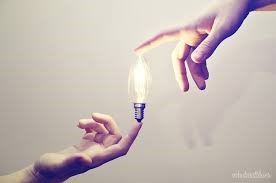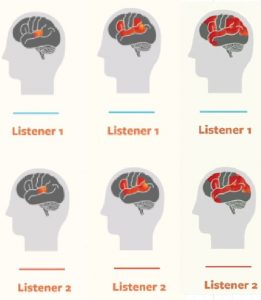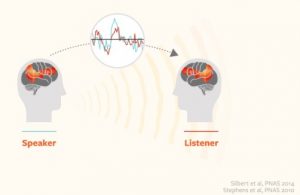This post is also available in Dutch.
Neuroscientist, Uri Hasson, Explains in his TED talk That we activate our brains in the same way when, we communicate.

We can share our ideas, dreams and memories through verbal communication.
Creative Commons Zero (CC0) license.
We all have an amazing device to transmit our ideas with, and that’s storytelling. Storytelling is the origin of human culture and history, and it’s what keeps us connected to eachother. Sharing stories ook Means sharing the representations our brain makes , accordion thing to Uri Hasson. In a series of fMRI experiments Dr. Hasson shows how the meaning of a story is represented in human’s brain, as well as, how it’s shared between the speaker and listener.
Word and text meanings are represented differently in the brain
Participants were listening to real-life stories while lying in a scanner. It turned out That the brain activity of all listeners while listening to the story were all very similar. Are those similar sounds, words or meanings being represented in the brains of listeners? To answer this question, Dr. Hasson would play backwards stories to participants so thatthey could not understand both the meaning of the words or the storyline. These stories would only trigger activity where the brain processes sound, the auditory cortex. This arises ook similar activity in the brain when, we hear environmental sounds.
So what about random parts of speech That our brain might pick up on? The stories were changed again, so That the storyline was lost but word combinations Remained the same, for example: “Good story, Jim dear. Nice details. Know about him did not she only through me? ” This time ook brain regions related to words and grammar were Involved.
Only when the full story was unchanged played, did a broad range of brain regions activate, zoals areas Involved in Decisions making and memory. Interestingly, the same brain regions activated When the stories were told in Russian to Russian speakers. Dr. Hasson and his team think That thesis brain regions reflect the meaning of the text.

Neural activity to speech backwards (Upper / lower left); to speech with words and grammar rules (Upper / lower center) and normal speech (Upper / lower right).
Published with the permission of Dr. Hasson.
In spite of this compelling evidence, it might be the case our attention That Contributes to the representations our brain makes for the meaning of a storyline. It is still an open question for future research, Whether it’s possible to separate attention and the meaning of language, and Whether it’s sensible to do so When investigating language use.
It takes two: similar neural activation in the speaker and listener
What happens in the speaker’s brain whenthey’re telling a story? Surprisingly, neural activity of a listener while he was listening to the story was similar to the brain activity of the storyteller while she was telling the story.

Similar neural activity in the brains of the speaker and listener.
Published with the permission of Dr. Hasson.
We create shared mental spaces when, we communicate about our experiences and memories. For example, while recalling a TV episode, the speaker did not only trigger similar brain activity That She had while watching it, but it Transmitted to the listener as well.
These intriguing findings have social Important Implications. In modern society, we are bombarded by mass media and Subjected to the interpretation of facts biased by the news. The communication sources we are coupled to influence us. So choose your sources of information carefully. It is Important However not to forget That coupling to other minds is a natural human need, coupled Therefore stay and keep communicating, consciously!
Written by Lara. Edited by Roselyne.
